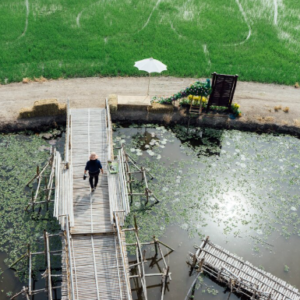India is finally emerging as a heavyweight in the global economy with its vast entrepreneurial energy, abundant labor, hunger to engage with the world for growth, and stifling regulations. It is eager to rewrite its story with macroeconomic reforms, solid economic growth, and a changing geopolitical environment. In the latest BNN news, the west is eager to work with India to benefit from its vast intelligent community and resources. The US is trying to attract India with more incentives and plans to establish it as an alternative for chip production to tackle the challenges posed by China.
India will host a summit of G20 economies this year. Janet Yellen, Treasury Secretary of the US, and nine Democratic senators traveled to India this week. Antony Blinken, the secretary of state, and Gina Raimondo, the commerce secretary, are following behind. India is a top destination for defense exports. The US is wooing India with more incentives to switch it away from Russia for its defense needs.
Expects to become the most populous nation in the world
India is expected to surpass China this year to become the most populous nation in the world. According to the IMF, the average annual economic growth in India is expected to be 6.5% in 2023 and next year. India will become one of the fastest-growing economies among the 30 major economies in the world, maintaining solid growth.
Efforts required to improve infrastructure to facilitate growth
In 2022, India displaced the UK as the fifth-largest economy in the world in terms of dollars. It expects to reach fourth place by 2025 in a tie with Germany. India has an impressive macroeconomic image. It needs to indulge in macroeconomic reforms to sustain the growth on the supply side. In an interview, Ashwini Vaishnaw, minister for communications, railways, IT, and electronics, said infrastructure is becoming a constraint at this time. Therefore, India needs to put in significant efforts on the infrastructure front this time around to achieve rapid growth in the future.
India has made significant progress in infrastructure in recent years by building several express highways. It expanded the national highway kilometers by 45% between 2014 and 2019. Rural roads in India improved by 85%, whereas airports almost doubled in this period.
People’s lives were improved by both digital and physical infrastructure
Ordinary people in India have improved their lives with improvements in digital and physical infrastructure. The number of homes with piped water in India has almost tripled in the past three years to 108 million, according to the government. In Bihar, the poorest state in India, several homes now have access to tap water. Small businesses in the state began accepting digital payments.
Not all credit goes to PM Modi because several freight corridors and other infrastructure projects began at the time of previous governments. Several new businesses valued at over $1 billion also began before he took office. According to news gathered from the best news websites, Modi has improved India’s business environment. The introduction of the GST increased the number of taxpayers in India.


